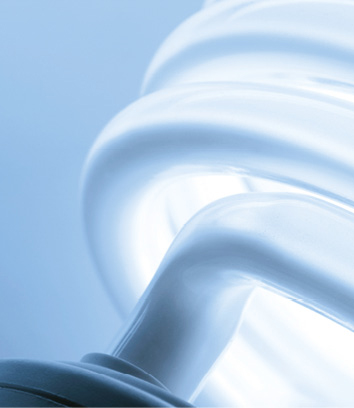
 A new wave of regulations, including the rewriting of the EcoDesign lighting regulations and the removal of the mercury exemptions for lighting means fluorescent lamps will be banned in the UK from September 2023 says Kevan Shaw, Design Director at Kevan Shaw Lighting Design
A new wave of regulations, including the rewriting of the EcoDesign lighting regulations and the removal of the mercury exemptions for lighting means fluorescent lamps will be banned in the UK from September 2023 says Kevan Shaw, Design Director at Kevan Shaw Lighting Design
Lighting regulations have had a massive impact on the lighting industry over the past 15 years. Yet while the reduction of energy use for lighting has been made possible, there are many instances when a consummate reduction in energy use has been achieved. Government departments are now seeking to enhance regulations to achieve even greater energy savings. Is this achievable? The huge potential energy savings made possible by moving away from incandescent lamps, low efficiency fluorescent, compact fluorescent and metal halide to LED cannot be repeated, but smaller savings are achievable at very significant capital cost.
Since BREXIT there has been an ambition in the UK to “simplify” inherited EU regulations and the Department for Business, Energy & Industrial Strategy (BEIS) has been looking at introducing new EcoDesign requirements for lighting products(i). These were discussed over the last year and on January 10th they published a final public consultation on the new regulations that you can read and respond to at the end of this article(ii).
EXISTING LIGHTING
What does this mean for your existing lighting installation? Primarily fluorescent lamps, even T5 HE fluorescent tubes are going to be banned this year. This is part of a two-pronged attack, as first the mercury exemption for lighting in the restriction of hazardous substances regulations (ROHS)(iii) has been removed. Secondly, the BEIS EcoDesign proposal doubles down on this by requiring a minimum energy performance standard (MEPS) of 120 Lumens per Watt for all mains operated light sources. This MEPS also kills off all compact fluorescent lamps, many metal halide lamps and the last remaining tungsten halogen lamps for general lighting. It also kills off many LED replacement lamp products so there will be little choice other than to replace complete lighting systems when any stock of lamps you currently use are depleted.
 Planning for this obsolescence is something that needs to start soon. As lighting designers, we have undertaken a number of technology replacement schemes to determine the optimum solutions that can deliver better and more economic lighting systems with maximum reutilisation of the existing equipment and wiring.
Planning for this obsolescence is something that needs to start soon. As lighting designers, we have undertaken a number of technology replacement schemes to determine the optimum solutions that can deliver better and more economic lighting systems with maximum reutilisation of the existing equipment and wiring.
What has become manifestly obvious is that LED retrofits for fluorescent lamps are a rather short-term solution, often accompanied by distinctly poor lighting performance. Although these products have substantially improved, there are always complications relating to the interface with any existing fluorescent gear and optics, particularly for glare control. There will also be problems with many LED fluorescent replacement lamps failing to meet the requirements set out in the BEIS proposed regulation. None of these replacement lamps will work with dimming systems, even those for energy saving such as absence detection or daylight harvesting.
LIGHTING CONTROL SOLUTIONS
The greatest energy savings in lighting are going to be provided by well designed lighting control systems. Although not part of product regulations such as EcoDesign, lighting controls are becoming a regulatory requirement for new buildings or larger scale refurbishments. The change to LED has made lighting control much more effective. Because LEDs are electronic components, they are easy to control, unlike legacy technologies such as fluorescent or metal halide. LEDs are also instantly responsive, so with good design the users of spaces should not even be aware their lighting is controlled automatically.
Using available daylight is a great option as it doesn’t just save energy but improves people’s mood and wellbeing. Absence detection also saves energy, however dimming rather than switching removes the distraction of lights being switched on and off in the user’s peripheral vision. LED’s extremely long life and gradual reduction in output offers extremely valuable constant luminance control.
With control systems the human factor should not be forgotten, as people are not mechanical devices and can be unpredictable in their response to lighting changes. Some users are also easily intimidated by a control system that is not completely intuitive – whether it’s a touch screen, push button or dedicated phone app. People might be inhibited from making changes to lighting that impact other people around them, but they do like to control their own personal working environment. Our role as lighting designers requires us to understand people as much as lighting systems, and develop control systems that can deliver good quality lighting and energy savings, which are also human friendly from a user’s perspective.
ACTIONS NEEDED
- Assess your exposure to the removal of fluorescent and HID lamps from the market.
- Develop a strategy to maintain your existing lighting systems by stockholding lamps or replacing systems.
- Assess impacts on existing lighting controls and effects on energy costs if existing systems will no longer work.
- Create medium to long term strategy to upgrade lighting systems to full LED using lighting controls.
In association with https://ksld.com
(i) www.gov.uk/guidance/placing-energy-related-products-on-the-uk-market
(ii) www.gov.uk/government/consultations/new-ecodesign-requirements-for-lighting-products





